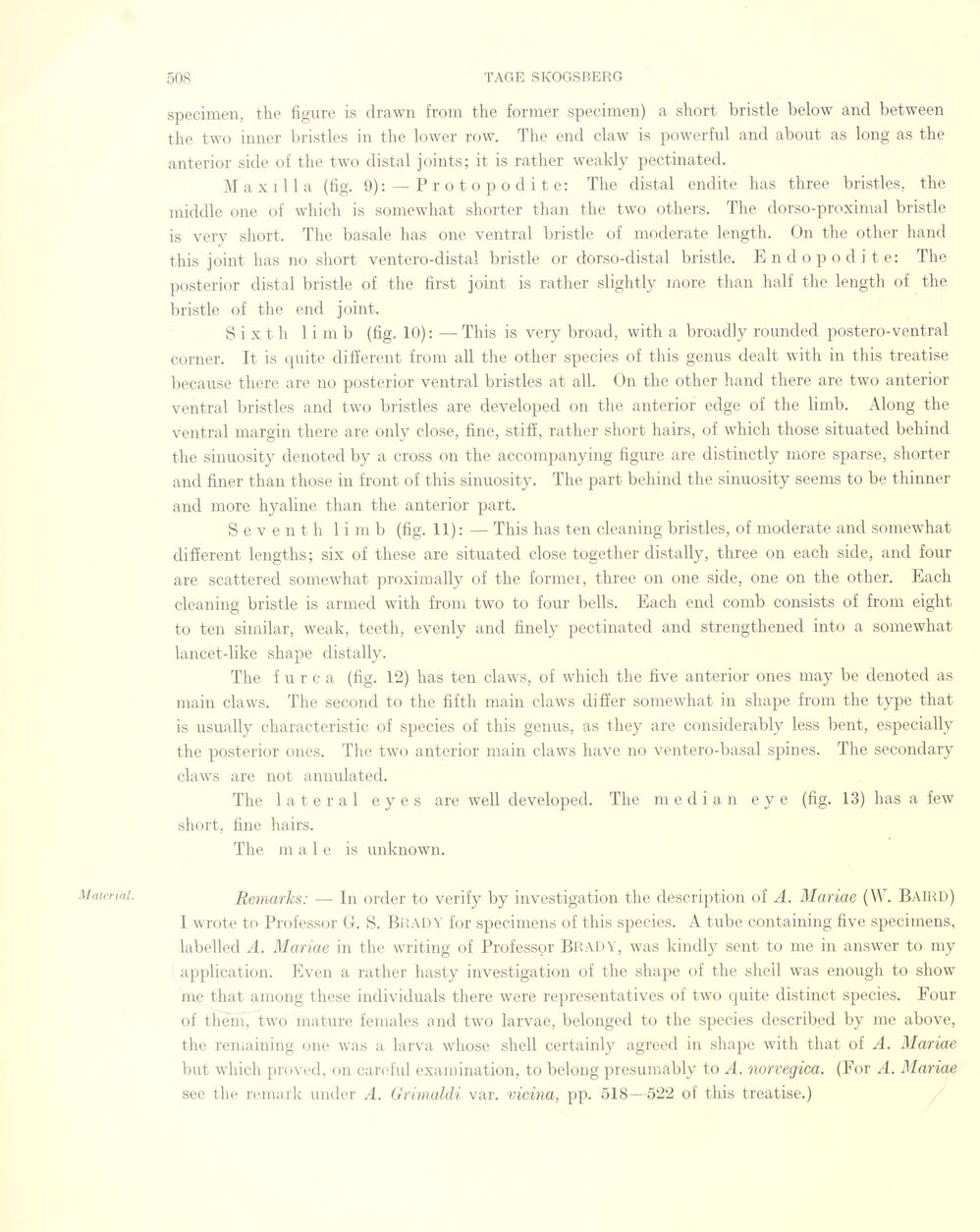
Full resolution (JPEG) - On this page / på denna sida - Sidor ...

<< prev. page << föreg. sida << >> nästa sida >> next page >>
Below is the raw OCR text
from the above scanned image.
Do you see an error? Proofread the page now!
Här nedan syns maskintolkade texten från faksimilbilden ovan.
Ser du något fel? Korrekturläs sidan nu!
This page has never been proofread. / Denna sida har aldrig korrekturlästs.
M Mer ial.
specimen, the figure is drawii from the former specimen) a short bristle below and between
the two inner bristles in the lower row. The end claw is powerful and about as long as the
anterior side of the two distal joints; it is rather weakly pectinated.
Maxilla (fig. 9): — Protopodite: The distal endite has three bristles, the
middle one of which is somewhat shorter than the two others. The dorso-proximal bristle
is very short, The basale has one ventral bristle of moderate length. On the other hånd
this joint has no short ventero-distal bristle or dorso-distal bristle. Endopodite: The
posterior distal bristle of the first joint is rather slightly more than half the length of the
bristle of the end joint.
S i X t h 1 i m b (fig. 10): — This is very broad, with a broadly rounded postero-ventral
corner. It is quite different from all the other species of this genus dealt with in this treatise
because there are no posterior ventral bristles at all. On the other hand there are two anterior
ventral bristles and two bristles are developed on the anterior edge of the limb. Along the
ventral margin there are only close, fine, stiff, rather short hairs, of wTiich those situated behind
the sinuosity denoted by a cross on the accompanying figure are distinctly more sparse, shorter
and finer than those in front of this sinuosity. The part behind the sinuosity seems to be thinner
and more hyaline than the anterior part.
S e v e n t h limb (fig. 11): — This has ten cleaning bristles, of moderate and somewhat
different lengths; six of these are situated close together distally, three on each side, and four
are scattered somewhat proximally of the former, three on one side, one on the other. Each
cleaning bristle is armed with from two to four bells. Each end comb consists of from eight
to ten similar, weak, teeth, evenly and finely pectinated and strengthened into a somewhat
lancet-like shape distally.
The f u r c a (fig. 12) has ten clawrs, of which the five anterior ones may be denoted as
main claws. The second to the fifth main claws differ somewhat in shape from the type that
is usually eharacteristic of species of this genus, as tliey are considerably less bent, especially
the posterior ones. The two anterior main claws have no ventero-basal spin es. The secondary
claws are not annulated.
The lateral eyes are well developed. The median eye (fig. 13) has a few
short, fine hairs.
The male is unknown.
Remarks: — In order to verify by investigation the description of A. Mariae (W. Baird)
I wrote to Professor G. S. BRADY for specimens of this species. A tube containing five specimens,
labelled A. Mariae in the writing of Professor BRADY, was kindly sent to me in answer to my
application. Even a rather hasty investigation of the shape of the shell was enough to show
me that among these individuals there were representatives of two quite distinet species. Four
of them, two mature fe males and two larvae, belonged to the species described by me above,
the remaining one was a larva whose shell certainly agreed in shape with that of A. Mariae
but which proved, on careful examination, to belong presumâbly to A. norvegica. (For A. Mariae
sec the remark under A. Grimaldi var. vicina, pp. 518—522 of this treatise.)
<< prev. page << föreg. sida << >> nästa sida >> next page >>